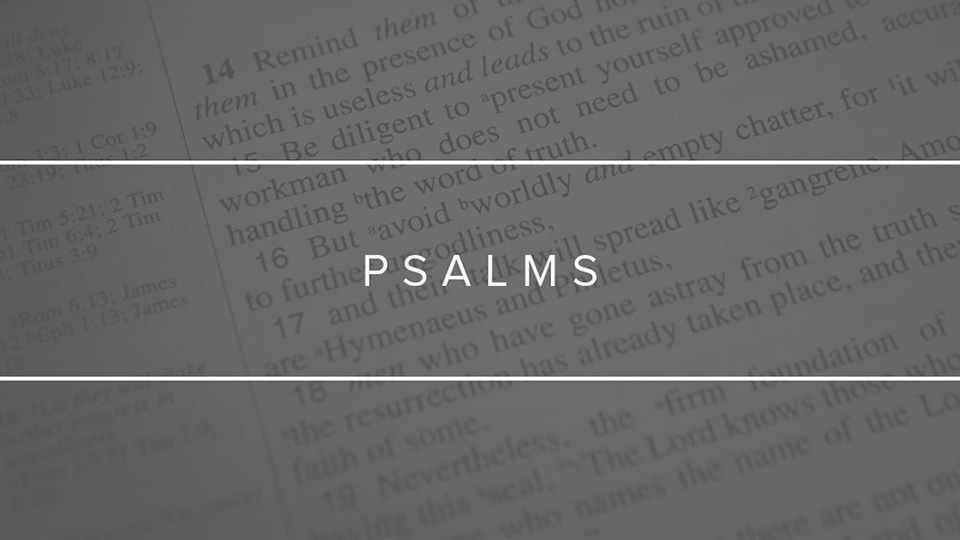Preaching the Psalms
Have you ever sat next to someone in church who has a terrible singing voice and just doesn’t care? They just sing it like they really mean it. I envy this person. Without the slightest bit of self-awareness, they simply rear back and let the song fly. They are too enraptured with the theology of the lyrics to be self-conscious about what others think. This moment is between them and their God.
This is the verve of the Psalms. We are peeking into a very public, yet very personal, conversation between the author and his God. When preaching a Psalm, the personal nature of each individual Psalm will seep through, and it is shocking at times. However, this is not the most interesting part of the Psalms. The most interesting aspect of a psalm, and the part that has most bearing on the sermon, is its structure. Psalms are Hebrew poetry. And this is where we get lost.
The Psalms present themselves in the form of poetry, and yet, unlike how we are trained in the West, the Psalms do not rhyme. There is a lot to say about Hebrew poetry; however, the most dominant feature is that the Hebrew poets were not dependent on rhyme but on parallelism. Parallelism is not just an aspect but the dominant feature of Hebrew poetry. Parallelism is to Hebrew poetry what rhyme was for years to Western poetry. So, if you understand this one literary device, the Psalms simply open up.
So, what is parallelism? When the psalmist makes a statement, he uses parallelism to reinforce, explain, or contrast an idea in the lines that follow that line.
Here are some specific examples.
Reinforce
Your word is a lamp to my feet
And a light to my path.
Psalm 119:105
These two phrases say essentially the same thing, the latter reinforcing the former.
Explain
The Lord is the strength of his people;
He is a saving refuge among the anointed.
Psalm 28:8
How is the Lord the strength of His people? Well, more specifically, He is a saving refuge. The Psalmist did not say anything new but repeated the idea with further explanation.
Contrast
The wicked lie in wait to destroy me,
But I consider your testimonies.
Psalm 119:95
The first line presents a proposition, and the second line has meaning when contrasted against the first.
While the Psalms may be intimidating to preach, if you can grasp the essence of this parallelism, then you have a handle on the major genre of the book. And this is the way to think of preaching Psalms, or any book for that matter—when you want to preach an individual text, you move from its microstructure to its macrostructure. In other words, we understand what this individual text means in light of the entire book.
Those of us in the academy are used to dealing with the books on the macro level—this book of the Bible was written to this audience, has this outline, and relates to the other books in the cannon this way, etc. However, those who are preaching Sunday in and Sunday out are pressed to deal with the microstructure. The pastor is asking a simple question: What does this individual text mean? Psalms help us understand the relationship between the two. And there is a relationship.
Let’s move from macrostructure to microstructure using the Psalms.
The macro structure of the book is that it is composed of five books:
- Book 1: Psalms 1-41
- Book 2: Psalms 42-72
- Book 3: Psalms 73-89
- Book 4: Psalms 90-106
- Book 5: Psalms 107-50
Within these five books, the Psalms fall into several categories: Hymns, Laments (corporate and individual), songs of thanksgiving, and spiritual songs.
Individual Psalms are grouped in chapters in our Bible. The structure of the individual poem is that it is built around strophe. These are the larger units, not unlike paragraph units in an epistle, within the Psalm, often set off with double spacing between each Psalm in our English Bibles. The strophe is composed of lines. These are not the lines on the page, but the complete thoughts that are paralleled with other thoughts as we mentioned above. So the Psalms look like this:
Book – > Chapter -> Strophe -> Line.
And it is the line that will contain the parallelism. Again, if we understand the parallelism, we understand the basic unit of thought within the Psalms.
When composing a sermon on the Psalms, read the individual Psalms and note when the author reinforces, explains, or contrasts an individual thought. The meaning will begin to come alive. Then, consider how the meaning of the chapter and book influences the individual meaning of the text. You will be able to preach with confidence as you structure your sermon using the strophe structure of the Psalm.
You will be able to rear back and preach like you mean it.
This article first appeared on www.stevenwsmith.net



